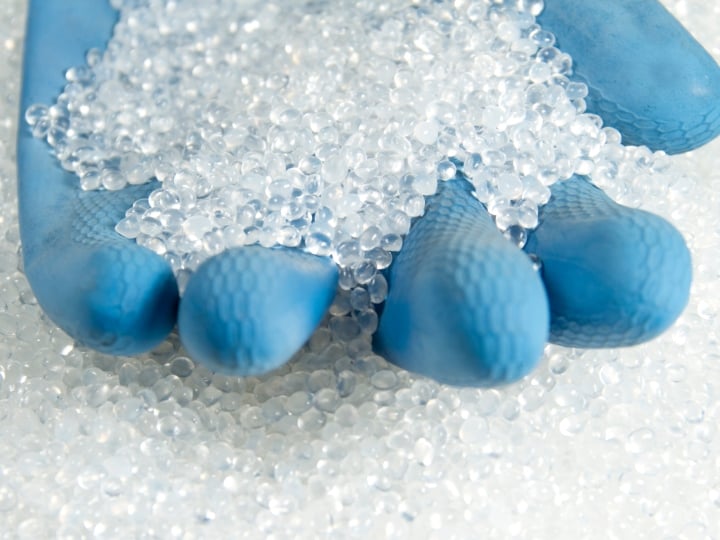Brittleness Temperature of Plastics and Elastomers by Impact ASTM D746, ISO 974
Scope:
Brittleness temperature is the temperature at which 50% of the tested specimens exhibit brittle failure at specified impact conditions. It is utilized primarily for plastics and elastomers.
Test Procedure:
Specimens are secured in the customer specified specimen holder (A or B) with a torque wrench at 5 in-lb. The specimen holder is lowered into a bath at a specified temperature. The specimens are impacted at 2000 ± 200 mm/s and then examined. The procedure is repeated at a lower temperature until enough data is generated to determine a brittleness temperature. Brittle temperature is the temperature at which 50% of the specimens fail. Brittle failure is defined by ASTM D746 as fracture into 2 or more pieces, or any crack visible to the unaided eye. The specimens can be bent to an angle of 90° and examined for cracks at the bend.
Data:
Test temperatures, number of failures and the determined brittleness temperature.
Specimen size:
There are three specimens: Type I, Type II or Type III. ASTM specimens are Type I at 6.35 mm by 31.75 mm by 1.91 mm thick. ISO specimens are Type III at 20 mm by 2.5 mm and 2.0 mm thick.
**Please note that this test description is intentionally generic in nature and aimed at providing a descriptive summary to enhance test understanding. Due to copyright restrictions, we are not able to provide copies of standards. Standards can be obtained from appropriate standards authorities.
Polymers News and Events
LEARN how CircularAssure helps you to close the loop in the circular economy for plastics
Technical Talk: Circularity - Addressing Challenges in Material Development through Evaluation Programs
BROCHURE: Injection Moulding Test Specimen Production Catalogue
ARTICLE: Processability and evaluation programmes for recycled plastic materials
ARTICLE: Adhesives Quality Assurance Testing Programs
ARTICLE: Enabling Polymer Non-Wovens Development
CASE STUDY: Polymer Surface Contamination Resolution
CASE STUDY: Elastomer Seal Material Failure
CASE STUDY: Polymer Failure - Distribution and Dispersion of Fillers

